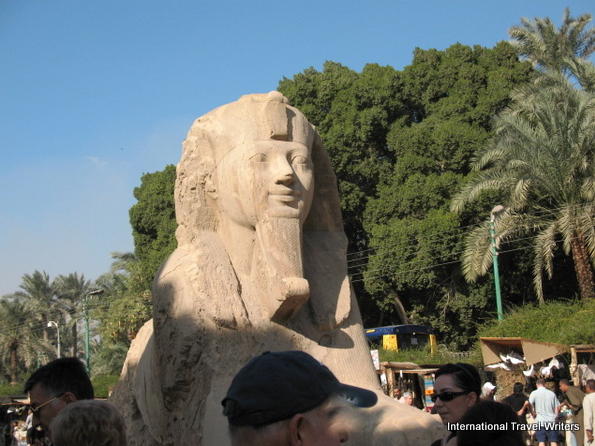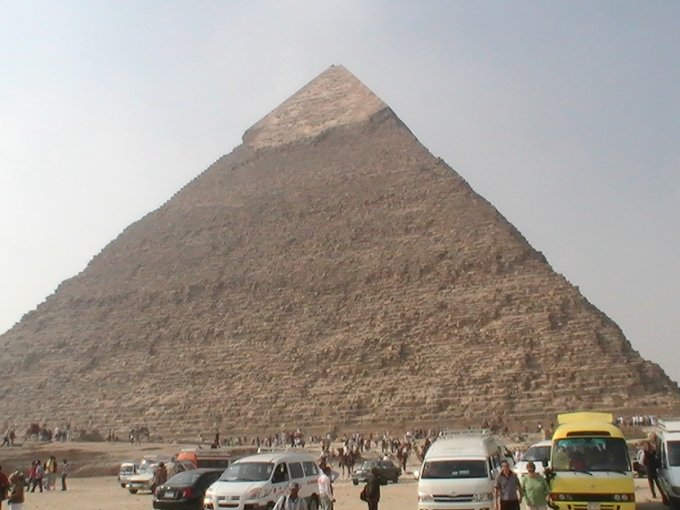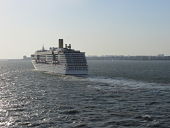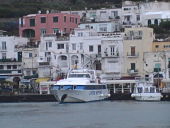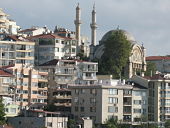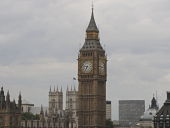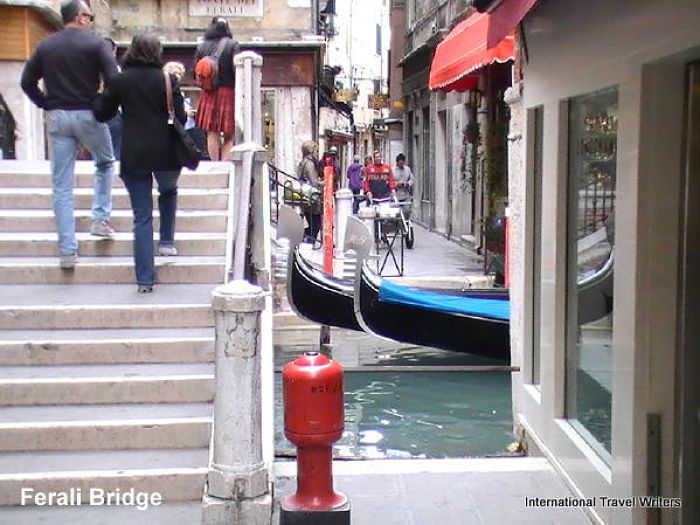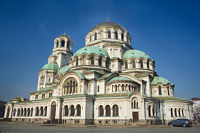Egypt ...antiquities of the ages...Giza plateau
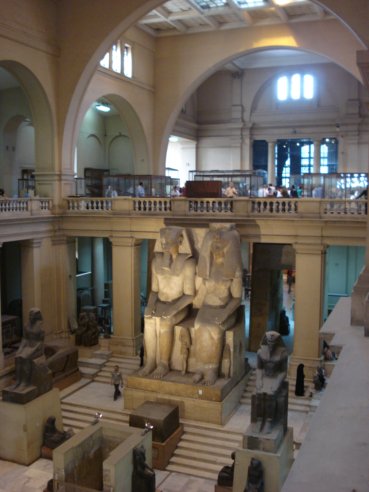
The largest city in Egypt is Cairo, a city that straddles time, spanning the dawn of civilization to the present. Ancient pyramids, historic mosques, Coptic churches, and medieval architecture of Old Cairo to modern Tahrir Square, home of the Antiquities Museum and American University in Cairo, all eras are represented in this amazing city. The museum houses the richest collection of antiquities, including the magnificent Tutankhamen collection.
This museum is showing it's age and seemed a little decrepit to be holding such a vast chunk of history but we were told that a new museum is under construction, and we were glad to hear that.
Wikipedia gives the following historical facts on this... the government established the museum, built in 1835 near the Ezbekeyah Garden. The museum moved to Boulaq in 1858 because it outgrew the location. In 1855, shortly after the artifacts were moved, Duke Maximilian of Austria was given all of the artifacts. He hired a French architect to design and construct a new museum for the antiquities.
The new building was to be constructed on the bank of the Nile River in Boulaq. In 1878, after the museum had been completed for some time, it suffered some irreversible damage; a flood of the Nile River caused the antiquities to be relocated to another museum in Giza. They remained there until 1902 when they were moved to the current location in Tahrir Square.
UPDATE: Our visit to this historic area was in Nov. 2009 and a great deal has changed since that time. The turmoil and strife now occurring is unfortunate for those wonderful people we met during our visit. It is our hope that peace will win.

The remains of many famous Pharaohs are in the museum. Pharaoh Ramses III, Amenhotep IV (approx. 1372BC.) and numerous others. The Royal Mummies section charged an additional fee to see the collection of approx. 10-15 mummies, some of which didn't have absolute identities but they were believed to be royal due to artifacts found with them that survived the ancient grave-robbers.

There are two main floors of the museum, the ground floor and the first floor. The ground floor contains an extensive collection of papyrus and coins used in the Ancient world. The languages contained on these fragments are Greek, Latin, Arabic and the Ancient Egypt language of hieroglyphs. The coins are Egyptian, Greek, Roman, and Islamic. Other artifacts on the ground floor are from the New Kingdom, the time period between 1550 and 1069 BC.
The first floor contains artifacts from the final two dynasties of Ancient Egypt...items from the tombs of Thutmosis III, Thutmosis IV, Amenophis II, Hatshepsut, and the courtier Maiherpri. There are also artifacts from the Valley of the Kings and King Tut's golden chariots. The discovery of the Rosetta Stone enabled scholars to translate the ancient hieroglyphs.

The next venture after leaving the Museum of Antiquities was to be taken to the Papyrus Institute were a demonstration was given, showing the ancient procedure of manufacturing the oldest paper in the world. They had a selection of paintings on papyrus such as the Pyramids, King Tut, and many other Egyptian scenes available for purchase. As intriguing as this demonstration was, upstairs there was a jewelry shop...so this was my preference.
Although we ordered our names done in hieroglyphics on gold cartouches, they wouldn't be ready until the next day. The tour leader said it wasn't a problem to stop by the next afternoon on our return trip to the ship and pick up the items.

Lunch was planned at Le Meridian Hotel which was closer to our afternoon destinations. At dusk we would head for our 5 star Mean House Oberoi Hotel, nestled between the city and the desert. It boasted unparalleled views of the majestic splendor of the Giza Pyramids.
It was a first class hotel although I would have preferred a hotel on the Nile River (the wider areas of the river without the silt being dredged out). The Nile is actually quite beautiful in some areas. However, the Oberoi was a pleasant surprise with manicured gardens, plus it occupied a location near the pyramids. We were only interrupted by the 5 a.m. "call to prayer" ceremony in the city.

Cairo has many waterfront hotels. I was told, for the best sunset views and to see the Pyramids from your room, choose a westward facing room with a balcony on a high floor. Although its balconies are small, the hotel that has the best combination of river facilities and vistas is the Sofitel Cairo El Gezirah. The lobby is also one of the nicest on the Nile.
The most romantic Nile view suites are the duplexes on the ninth floor of the Shepheard Hotel which was built in 1957. The balconies are large enough to pull out a couple of plush chairs to relax in while enjoying the views.
Four Seasons Cairo at Nile Plaza has large river facing balconies and it has a prominent location in the embassy district of central Cairo. The Grand Hyatt, with an attached shopping center, can get busy but it has balconies facing the river. It also has a 40th floor bar and 41st floor revolving restaurant where you can glimpse Cairo's bright lights.

We proceeded to the Giza Plateau to attend the English version of the "Son et Lumiere". Here, seated in front of the Sphinx under a star-studded sky, the Sound and Light performance brings the magnificent history and achievements of the ancient Egyptians to life as the illuminated pyramids and the mysterious Sphinx dominate the surrounding darkness. It was at this surreal moment that I realized we were really here...it wasn't a movie. It was spectacular.

Giza is the generic name for the west bank district starting at the El Gallo Bridge; it extends southwest from the Nile to the desert plateau...and the pyramids. Many of Giza's skyscrapers date to the 1970's when Sadat opened Egypt to foreign investment; and the river got colonized by belly-dancing boats, dinner boats, and other entertainments.
In the middle of the darkened river the boats move slowly. You can watch the lights of the city shimmer in the wavelets. The wind on the Nile blows consistently south, so if you charter a felucca you will be sailing south, with the wind towards Upper Egypt. This is a bit confusing because Lower Egypt is to the north.

Winding up the first day, we boarded a boat to sail on the Nile River, the same timeless waterway traversed by Pharaohs, Queens and Nobles thousands of years ago. A buffet dinner in reasonably elaborate surrounding was enjoyed while gliding past Cairo's waterfront landmarks with belly dancing as entertainment...much to my husband's pleasure.

When peace prevails, we desire to return to this timeless land. One visit is simply not enough to absorb such wonderment.
Having trouble finding what you need? International Travel Writers Index and Map
OR
Do you have a travel experience or story to share? Share your travels here!
Related Articles.....
Return from Egypt-more to Internationaltravelwriters.com
By Carolynne Woods, © Copyright 2010-2020. International Travel Writers.com All rights reserved images and text

